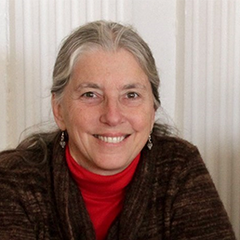
When Anita Sanchez visited Karl’s beautiful garden in Sweden, filled with plants from all over the world, she realized why he never wanted to leave! Like Karl, Anita loves exploring wild places and learning about plants. An environmental educator and science writer from upstate New York, she often writes about unloved plants and animals, as in Leaflets Three, Let It Be: The Story of Poison Ivy. You can visit her website here.
Who is Karl?
Karl Linne is better known by his formal name in Latin, Carolus Linnaeus. He was a famous scientist and naturalist of the eighteenth century. (In Karl’s day, people used Latin when they talked about science.) Karl named thousands of plants and animals with scientific names in Latin, and he gave himself a fancy name, too.
Why is the book called “Karl, Get Out of the Garden!”
Karl’s father loved nature and spent hours pottering in his garden—but Karl’s mother wanted her son to grow up to be a famous scholar. She pestered him to study and scolded him every time he sneaked out to the garden. But the secret trips to the garden became the basis of Karl’s lifelong love of nature and his scientific skills.
Why did you write about Karl?
As one of the world’s greatest scientists, Karl classified and named thousands of plants and animals, using forests and gardens as “living textbooks.” He invented a new language of science, and his work is the basis of the classification system used by scientists world-wide. Also he’s a really fun character to get to know!
Why is he important for kids to know about?
Karl Linne was a kid who hated school—but his father encouraged him to follow his heart. Karl turned his passion for nature into a life-long career, and he was eager to share his love of plants and animals with others. Perhaps he remembered how he had been bored in school, because he became a beloved teacher, leading rowdy, fun field trips into the garden and the woods.
How did you learn about Karl’s life?
Fortunately for historians, Karl loved to write and talk about himself. He wrote a lot about his childhood, from his earliest memories of flowers in his father’s garden. He also wrote hundreds of letters—warm and loving to friends, filled with insults to enemies--and we can learn a lot about him by reading his own words. While researching this book I traveled to Linnaeus’s native Sweden and tried to follow in his footsteps, recreating part of his journeys to study and name plants and animals. I traveled north of the Arctic Circle, as Karl did, to visit Lapland. I photographed Karl’s famous garden in Uppsala, Sweden, the place where he wrote: “In my garden I live as happy as a king!” I also visited his beloved farm, Hammarby, and walked the paths where he led his students on their rowdy field trips. In all these places, it was easy to imagine Linnaeus eagerly studying and naming his beloved plants.
What other books have you written?
Like Linnaeus, I’ve always been fascinated by plants and animals no one loves—like poison ivy, dandelions, tarantulas and scorpions. My first book was Teeth of the Lion: The Story of the Beloved and Despised Dandelion, about all the ways dandelions are used, for food, medicine and magic. I’ve even managed to discover something good about poison ivy—it’s a major food for wildlife, especially for birds like robins, bluebirds and cardinals. Leaflets Three, Let it Be! The Story of Poison Ivy is a picture book which introduces the youngest explores to this scary but important plant. My next book was In Praise of Poison Ivy: The Secret Virtues, Amazing History, and Dangerous Lore of the World’s Most Hated Plant, a nonfiction book for adults. I have a book coming from Houghton Mifflin called ITCH: Everything You Didn’t Want to Know About What Makes You Scratch. It’s about the science of itching, and some of the world’s most irritating—but fascinating—creatures: lice, bedbugs, fleas, cactus, mosquitoes, and fungus. I also have a blog about unloved and underappreciated plants here.
What places have you traveled to? What’s the wildest thing you’ve done?
I love to adventure in wild places around the world. I once rode a camel in the Sahara desert, and I went snorkeling in the Kingdom of Tonga in the South Pacific. I once visited an elephant orphanage in Sri Lanka, and watched baby elephants being bottle-fed. In Karl’s native Sweden, I took a 20-hour train ride to the far north wilderness where Karl studied plants. I loved the birch forests, fir trees, and the eerie glow of the Northern lights.
Visit Anita online.
Books by Anita Sanchez




